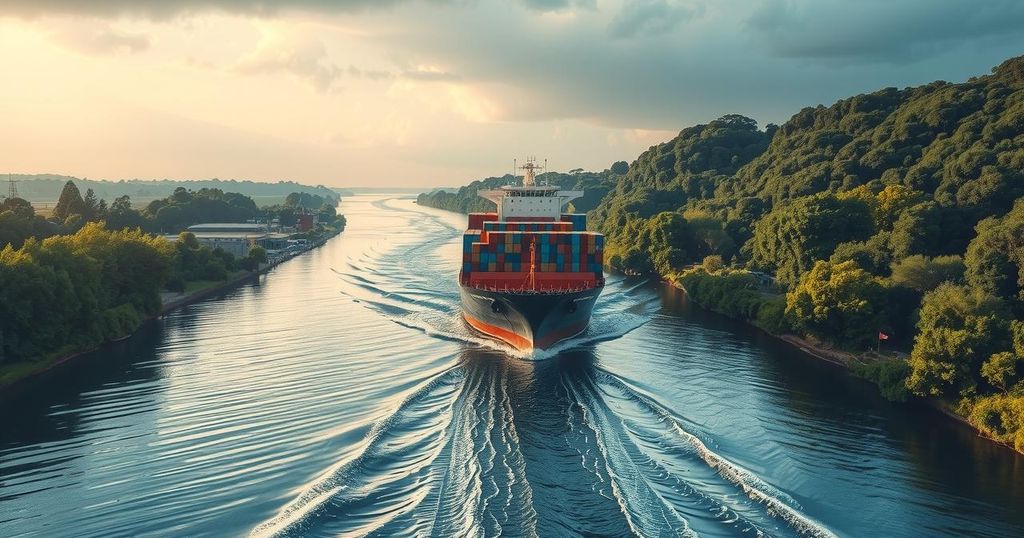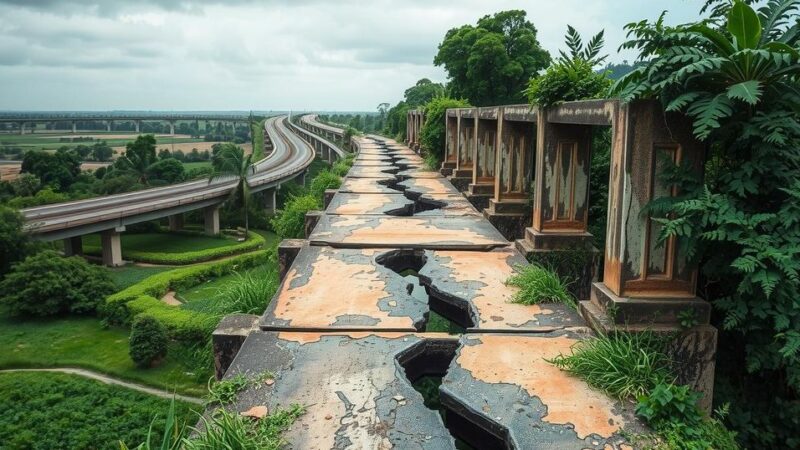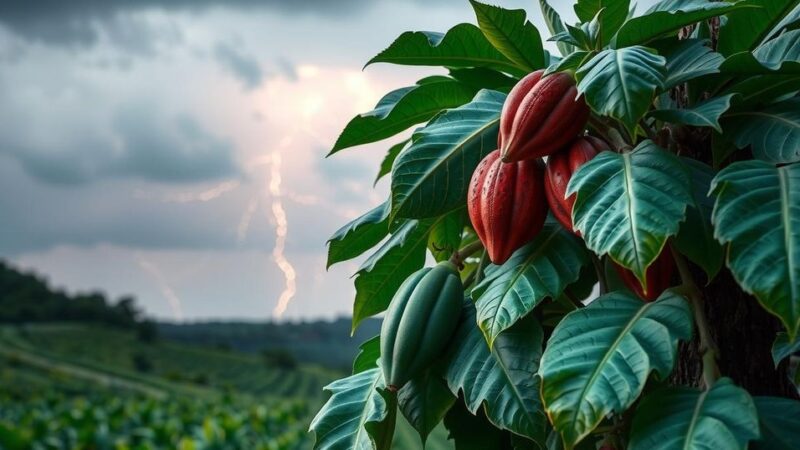The Panama Canal, a vital global shipping artery, faces increasing challenges from climate change, especially concerning rainfall variability. Significant decreases in rainfall have led to operational restrictions on the Canal, resulting in reduced vessel traffic. While the canal remains crucial for international trade, ongoing research is necessary to mitigate the impacts of future weather-related disruptions.
The Panama Canal, an essential global shipping route since 1914, spans approximately 82 kilometers and connects the Pacific Ocean with the Caribbean Sea. Despite its strategic importance, recent political discussions, including comments from President Donald Trump and Secretary of State Marco Rubio about reclaiming U.S. ownership of the Canal, have spotlighted its relevance in our times.
The functionality of the Canal has increasingly come under threat from changing rainfall patterns linked to climate change. As these changes continue to unfold, they could lead to disruptions in traffic and increased volatility for shipping routes that rely on this crucial waterway.
The Canal operates through a lock system accommodating a variety of vessels, including the Neopanamax ships that can carry over 13,000 containers. The transit through the three locks takes 8 to 10 hours, significantly reducing travel time and fuel consumption compared to alternative routes.
Mark Russo, Chief Science Officer at Everstream Analytics, notes that “Five percent of shipping globally traverses the Panama Canal,” highlighting its vital role in international trade.
Gatun Lake, which is an integral part of the Canal, requires adequate rainfall to maintain navigational depths. Each day, approximately 7 billion liters of water are extracted from the lake for the lock system, alongside losses from evaporation and local water supplies.
Although Panama receives substantial rainfall annually—averaging more than 2000 millimeters—there have been notable dry periods over the past 30 years. Specifically, years such as 1998, 2016, and 2024 saw rainfall dip below 1750 millimeters in the Canal watershed, representing unprecedented clustering in a 144-year record.
Due to the lower water levels resulting from these dry years, the Panama Canal Authority curtailed the number of ships allowed passage. There were 11,240 vessels in 2024, down from 14,080 in 2023, which necessitated reducing the maximum draft of vessels, leading to increased delays as ships were required to offload cargo to comply with restrictions.
Researchers remain vigilant about the impacts of weather on supply chain logistics pertaining to the Panama Canal, emphasizing the necessity for long-term planning. Shipping companies must book passage well in advance, enabling them to strategize against potential weather-related disruptions.
All recent dry years correspond to El Niño events, characterized by warmer ocean temperatures influencing weather patterns. Michael McPhaden from NOAA mentions that while there is currently no conclusive evidence that climate change affects the frequency of El Niño and La Niña cycles, their associated impacts on rainfall patterns are significant.
In conclusion, the Panama Canal remains a critical conduit for global trade, but its operations are increasingly threatened by climate-induced alterations in rainfall patterns. While the region has historically received adequate rainfall, recent dry years have led to operational restrictions, impacting vessel traffic and trade. Continuous research and strategic watershed management are essential to safeguard the Canal’s functionality amidst an evolving climate.
Original Source: eos.org






